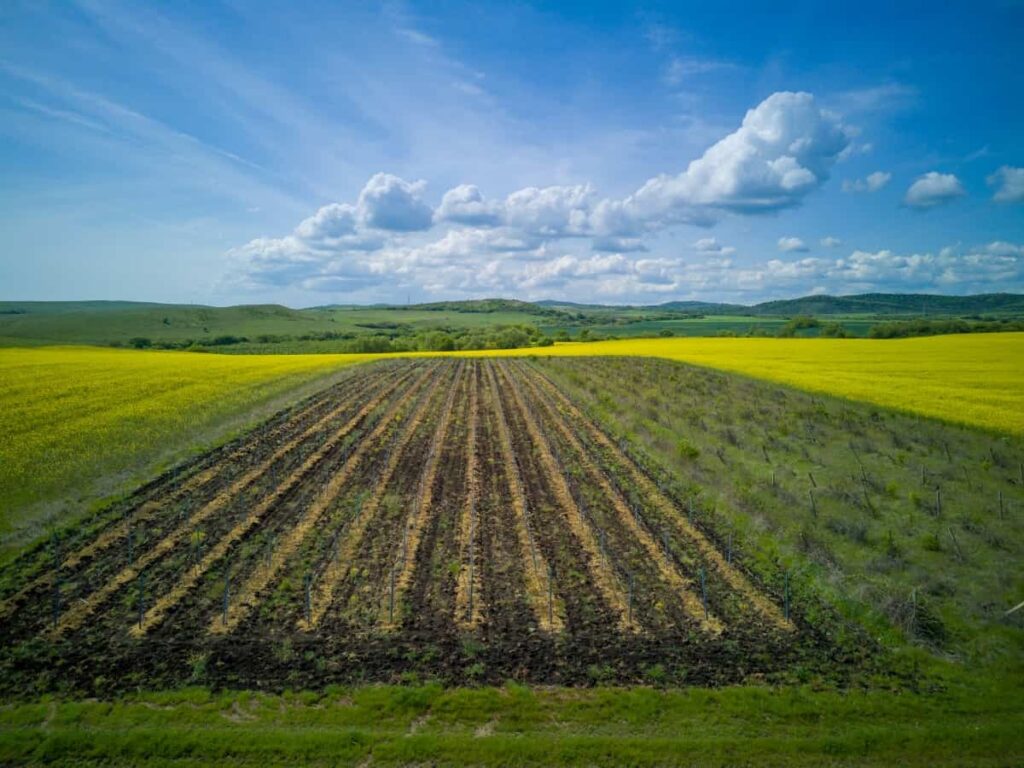Land costs play a crucial role in the agricultural sector, determining the feasibility and profitability of farming ventures. Understanding the factors that influence farmland prices in India is essential for farmers and potential buyers alike. For farmers, knowing the land costs in India is essential for informed decisions about crop selection, investment in infrastructure, and long-term planning.

Land Rate Per Acre in India
Agricultural Land Rates Across Different Regions in India
The cost of 1 acre of land in India varies significantly across different regions. Factors such as location, soil fertility, accessibility to markets, and local demand all contribute to these variations. Northern states like Kashmir, Punjab, and Haryana have historically seen higher land rates due to their fertile soils and extensive irrigation systems.
The average land cost per acre in North India can range from Rs. 5 lakhs to Rs. 20 lakhs. Moving towards central India, states like Madhya Pradesh and Chhattisgarh offer more affordable options with lower land rates. Western states like Gujarat and Maharashtra also show a similar trend but are influenced by industrial development as well.
Southern states such as Tamil Nadu and Kerala boast diverse agro-climatic conditions, resulting in varied land prices. Coastal areas tend to command higher rates due to their suitability for cash crops like spices or horticulture. The land cost in South India per acre ranges from ₹5 lakhs to ₹25 lakhs. Comparing the cost of agricultural lands can help prospective buyers make informed decisions based on budget constraints without compromising on quality or productivity.
Historical Trends of Land Rate Per Acre in India
India’s land rates have witnessed significant fluctuations over the years, influenced by various economic and social factors. Looking back at the historical trends can provide valuable insights into the current state of land costs in different regions in India. In the past few decades, there has been a steady increase in land prices across India. This can be attributed to factors such as population growth and changes in agricultural practices. Rapid industrialization and infrastructure development have also impacted land rates significantly.
It’s important to note that while overall land rates have increased over time, there are variations within each state depending on location-specific factors such as proximity to cities or major highways. By analyzing historical data on land rates per acre in different regions across India, investors can gain valuable insights into market dynamics before making any significant financial commitments.
Factors Influencing the Price of Land
One such factor is the location of the land. Lands situated in prime locations with good connectivity and proximity to cities tend to have higher prices compared to remote or less accessible areas. Another crucial factor is the availability of basic amenities and infrastructure. The type and quality of soil also play a significant role in determining land prices.
In case you missed it: Land Preparation Cost Per Acre in India: Exploring Different Average Cost Components

Government policies and regulations related to land use can also influence its price. Market dynamics such as demand-supply forces, economic conditions, inflation rates, and interest rates also impact land prices. During periods of high demand for real estate or booming economies, land values tend to increase substantially.
Urbanization and Its Impact on Land Rates
Urbanization has had a significant impact on land rates in India. As cities continue to grow their populations, the demand for land in urban areas has skyrocketed. One of the main reasons behind the increase in land rates is the limited availability of land within urban areas. As cities become, more densely populated, vacant lands become scarce commodities, resulting in higher prices.
Additionally, with rapid urbanization comes improved infrastructure and amenities such as roads, schools, hospitals, shopping centers, and entertainment facilities. These factors further contribute to the increased value of land. Another factor influencing land rates due to urbanization is speculation by real estate developers and investors. Furthermore, government policies also play a role in determining land rates during urbanization.
Future Projections of Land Rate Per Acre
The future of land rates per acre is speculation among real estate enthusiasts. Several factors are likely to shape the landscape in the coming years. One major influence on land rates is population growth. As cities expand and urbanization intensifies, the demand for space will soar. This increased competition for land resources could drive up prices significantly, especially in prime locations where supply is limited.
Another factor to consider is economic development. As regions flourish economically, attracting businesses and investments, the demand for commercial properties and residential spaces tends to rise accordingly. Improved accessibility can make previously undeveloped areas more attractive for investment purposes, leading to an increase in demand and, subsequently, higher prices.
Impact of Agricultural Policies on Land Rates
These agricultural policies play a crucial role in shaping the value and demand for agricultural and farmlands across the country. The farmland cost per acre in India varies across different states, depending on various factors such as location, fertility of the soil, infrastructure facilities, and demand. The main aspect is the government’s focus on promoting sustainable agriculture practices.
Another important factor is the implementation of land acquisition laws. Additionally, government schemes such as crop insurance and irrigation projects have improved overall productivity levels in agriculture. Policies aimed at diversifying income sources through agro-tourism or horticulture have also influenced land rates by increasing demand for specific types of agricultural lands that cater to these activities.
Investment Potential in Agricultural Lands in India
Investing in agricultural lands can be a lucrative opportunity for investors. Agriculture is a vital sector of the Indian economy, contributing significantly to GDP growth. In addition to capital appreciation, investing in agricultural lands also offers income generation opportunities through leasing or cultivating crops.
In case you missed it: 15 Best Solar Powered CCTV Wireless Cameras for Agricultural Land

Moreover, technological advancements have revolutionized agriculture with precision farming techniques and innovative irrigation systems. It’s important for potential buyers interested in acquiring 1 acre of land in Indian villages to conduct thorough research and understand these various factors before making any decisions. This will help them make an informed choice based on their budget and requirements.
Average Land Cost Per Acre in Different States of India
| State | Average Land Cost per Acre |
| Bihar | Rs. 10 lakhs above |
| Chhattisgarh | Rs. 15 lakhs above |
| Maharashtra | Rs. 60 lakhs above |
| Goa | Rs. 50 lakhs above |
| Karnataka | Rs. 30 lakhs above |
| Andhra Pradesh | Rs. 40 lakhs above |
| Jharkhand | Rs. 25-30 lakhs |
| Arunachal Pradesh | Rs. 10 lakhs above |
| Gujarat | Rs. 15-25 lakhs |
| Assam | Rs. 10-15 lakhs |
| Manipur | Rs. 10-15 lakhs |
| Haryana | Rs. 30-50 lakhs |
| Himachal Pradesh | Rs. 8-12 lakhs |
| Punjab | Rs. 25 – 50 lakhs |
| West Bengal | Rs. 15 -30 lakhs |
| Kerala | Rs. 30 lakhs above |
| Mizoram | Rs. 5 -8 lakhs |
| Tripura | Rs. 13 -15 lakhs |
| Delhi | Rs. 2.25 – Rs 5 crore |
| Rajasthan | Rs. 20-35 lakhs |
| Odisha | Rs. 5 -8 lakhs |
| Nagaland | Rs. 15 -18 lakhs |
| Sikkim | Rs. 7 -10 lakhs |
| Madhya Pradesh | Rs. 5 -15 lakhs |
| Tamil Nadu | Rs. 30 lakhs above |
| Uttar Pradesh | Rs. 20 lakhs above |
| Meghalaya | Rs. 11-15 lakhs |
| Telangana | Rs. 30 lakhs above |
| Uttarakhand | Rs. 15-18 lakhs |
| Jammu & Kashmir | Rs. 22-30 lakhs |
Please note that these land costs are approximate and can vary on many factors like location, accessibility, fertility, infrastructure development, and demand-supply dynamics.
Frequently Asked Questions (FAQ on Land Price per Acre in India
What Factors Influence the Cost of Land Per Acre in India?
Several factors determine the price of farmland per acre in India. These include location, fertility of the soil, proximity to amenities and infrastructure, accessibility, and demand for agricultural or farming purposes.
Is There a Significant Difference in Land Prices Across Different States?
Yes, there is a considerable variation in land prices across different states in India. Factors such as regional development, economic conditions, availability of water resources, and government policies all contribute to these differences.
Are There Any Legal Considerations While Purchasing Agriculture Land?
Yes. It is crucial to check all relevant legal documents before finalizing a purchase deal for agricultural land. This includes verifying ownership rights, land records like sale deeds or mutation certificates, and whether any restrictions exist on its use under state laws.
Which State Has the Highest Land Cost per Acre?
Maharashtra and Delhi are known to have higher average land costs due to their strong industrial base and urbanization. However, it is important to note that specific regions within each state may exhibit even higher or lower prices.
In case you missed it: Monthly Landscaping Maintenance Cost: Average Cost Per Square Foot for Different States

Conclusion
Land costs of agriculture and farmlands play a crucial role in the overall economy and development of a country. India, with its vast agricultural landscape and diverse geographical regions, is a country where the land holds immense value. The rates of land in India vary widely depending on various factors such as location, fertility of soil, accessibility to water sources, infrastructure development, and demand-supply dynamics.
- How to Raise Pigs in Your Own Backyard: A Comprehensive Guide
- Budget Friendly Sheep Shed Ideas: Cheap and Low-Cost Tips
- How Much Do Cattle Farmers Make: Revenue Streams in Cattle Farming
- Management Pests and Diseases in Your Cotton Field
- Sheep Farming Business Plan for Beginners
- Aquaponic Farming at Home: A Step-By-Step Guide
- Profitable Village Farming Business Ideas in 2024
- High-Yield Aquaculture: Fast-Growing Fish for Farming
- Effective Fish Pond Construction Techniques for Beginners
